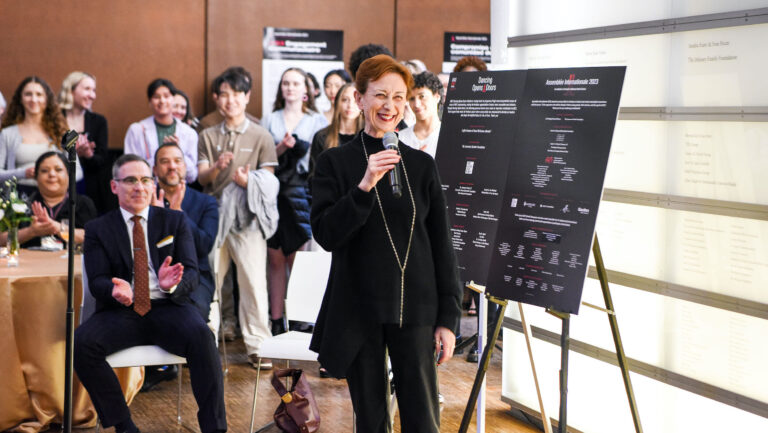
Former New York City Ballet dancer Silas Farley is set to become dean of the Trudl Zipper Dance Institute at the Colburn School, a top-ranked performing arts institution in Los Angeles. Joining Farley is his lifelong mentor Darleen Callaghan, as associate dean. Effective July 1, the pair replaces NYCB alums Jenifer Ringer and James Fayette, who have spent seven years at Colburn and are stepping down to spend more time with their children.
Farley, 26, retired from New York City Ballet in 2020. He has been involved with the Colburn School virtually over the past year, teaching master classes, choreographing for the school’s summer intensive and digital adaptation of The Nutcracker, and acting as an inaugural artist in its Amplify Series, a program celebrating artists of color.
“My motivation for retiring from performing as young as I did was to be able to devote myself more fully to teaching, choreography and scholarship,” Farley says. “I love to perform and felt I’d been able to develop that dimension of my artistry. This role gives me the opportunity to cultivate all of those other dimensions of my passion for dance and to grow as a leader.”
 Courtesy Colburn School
Courtesy Colburn School Darleen Callaghan
Farley instantly knew he wanted Callaghan by his side. Callaghan brings more than 30 years of arts leadership to the role of associate dean, having served as director of North Carolina Dance Theatre School of Dance (now affiliated with Charlotte Ballet) and Miami City Ballet School.
For Farley, the decision to work with Callaghan is as personal as it is strategic: They met when he was 8 years old. Callaghan invited Farley to join a scholarship program for young men at Charlotte Ballet, recognizing early on that he had a gift for teaching and choreography. At 14, Farley moved on to the School of American Ballet, prior to joining the corps de ballet of NYCB in 2013.
In addition to offering youth dance classes in ballet, tap, modern and musical theater for all ages, Colburn’s Dance Academy trains pre-professional dancers ages 14 to 19 in the Balanchine style. Because it is not affiliated with a professional company, Ringer says, Colburn School is unique in its approach, training versatile ballet dancers at the highest level who are not pushed toward any particular path. “We were able to create our dream program,” says Ringer, pointing to the broad support and agency granted by Colburn School president Sel Kardan as critical to TZDI’s success.
Ringer and Fayette plan to relocate to South Carolina to be closer to extended family but will continue to stay connected to the school, returning regularly as visiting artists. Additionally, they plan to continue teaching master classes and staging works for the Robbins Trust.
Passing the torch to Farley was a natural decision, they say.
“When James and I first started the program, we thought that our primary job was going to be teaching ballet,” Ringer says. “After a few months we learned that it was more about caring for the children. Many people can teach ballet; it’s not that rare a gift. Silas is so inspiring and cares deeply, not only about the art form but about the individual students.”
 Julieta Cervantes, Courtesy Colburn School
Julieta Cervantes, Courtesy Colburn School Silas Farley
Farley’s vision for the school taps into his own multifaceted passions: cultivating well-rounded dancers and nurturing students who desire to become teachers, choreographers and scholars—even those who ultimately enter different fields altogether. Colburn’s strong commitment to Balanchine-style training will continue, though Farley is eager to incorporate West Coast voices, such as Alonzo King and William Forsythe, into the mix and advocate for more diversity in ballet.
“Who are the voices that are missing and can enrich tradition, training and the individual artist? Dance is a language. Our task is to learn to speak it more articulately,” Farley says. “Classical ballet isn’t just for the white, Western world. With a language you can write nutrition facts or a sonnet. We can explore the different possibilities and empower people to learn the grammar. What do you want to say with this language?”



